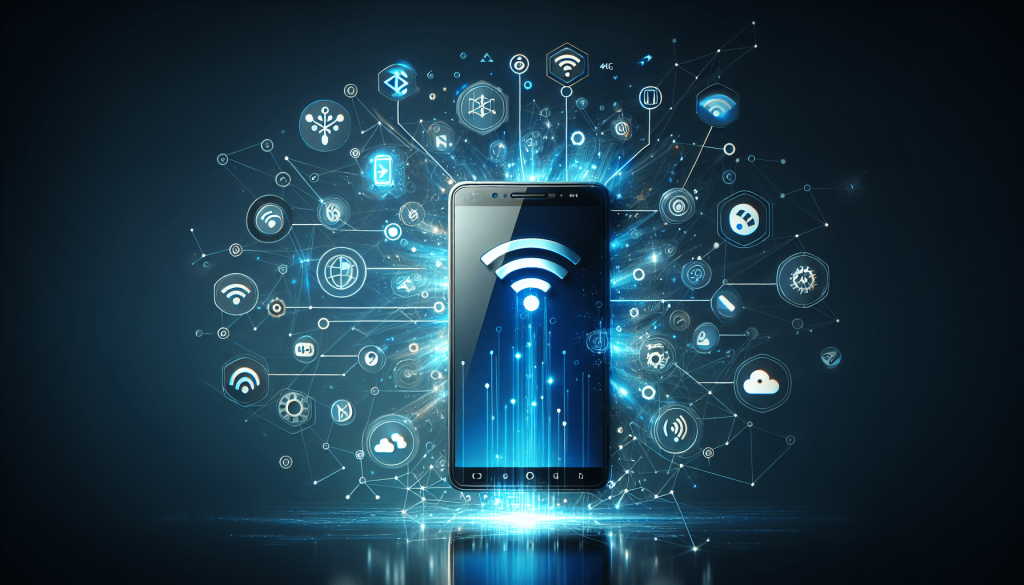In today’s increasingly connected world, mobile devices have become an essential tool for both personal and professional use. However, nothing is more frustrating than encountering network connectivity issues on your mobile device when you need it the most. From dropped calls and slow internet speeds to failed app downloads and intermittent connectivity, these network connectivity errors can disrupt your productivity and overall experience. In this article, we will explore common network connectivity issues on mobile devices and provide effective troubleshooting techniques to help you regain a seamless and reliable connection.

Common Network Connectivity Issues
No Internet Connection
One of the most common network connectivity issues that users face is the inability to connect to the internet. This can be frustrating, especially if you rely heavily on the internet for work or personal use. There are several factors that could contribute to this problem, such as a weak Wi-Fi signal, incorrect network settings, or issues with the service provider.
Slow Internet Speed
Another common issue is experiencing slow internet speeds. This can make it difficult to browse the web, stream videos, or download files efficiently. Slow internet speeds can be caused by a variety of factors, including network congestion, outdated device software, or even the specific website or app being accessed.
Intermittent Connectivity
Intermittent connectivity refers to the situation where the network connection keeps dropping or becomes unstable. This can be incredibly frustrating as it disrupts any ongoing tasks and makes it difficult to maintain a consistent connection. Interference from other devices, network congestion, or even hardware malfunctions can cause intermittent connectivity.
Troubleshooting Steps
When faced with network connectivity issues, there are several troubleshooting steps you can take to try and resolve the problem. These steps address common issues and can help diagnose the underlying cause of the problem.
Restarting the Device
One of the simplest troubleshooting steps is to restart your device. This can help resolve temporary glitches or conflicts that may be hindering your network connection. Restarting clears the device’s memory, restarts network connections, and can potentially resolve any software-related issues.
Checking Airplane Mode
In some cases, network connectivity issues can be attributed to accidentally enabling Airplane Mode. Airplane Mode disables all wireless connections on the device, including Wi-Fi and cellular data. Therefore, it is important to check whether Airplane Mode is turned on and deactivate it if necessary.
Verifying Wi-Fi/Cellular Data Enabled
If you are experiencing connectivity issues, it is crucial to ensure that Wi-Fi or cellular data is enabled on your device. In some cases, the network settings may have been inadvertently changed, resulting in a loss of connectivity. Verifying the settings and enabling the appropriate connection can help restore internet access.
Resetting Network Settings
If you have tried restarting your device and verifying the network settings without success, you may need to consider resetting your network settings. This option resets the Wi-Fi passwords, cellular settings, and VPN configurations on your device. However, it is important to note that this step will remove all saved Wi-Fi networks and you will need to reconnect to them manually.
Updating Device Software
Outdated device software can also cause network connectivity issues. It is essential to regularly update your device’s software to ensure optimal performance and compatibility with the latest network protocols. Operating system updates often include bug fixes and improvements that can address networking problems.
Checking Wi-Fi/Cellular Signal Strength
If you are connected to a Wi-Fi network or using cellular data, it is important to check the signal strength. Weak signals can result in intermittent connectivity or sluggish internet speeds. Moving closer to the Wi-Fi router or finding a location with better cellular coverage can improve signal strength and consequently enhance your network connection.
Forgetting and Reconnecting to Wi-Fi Network
Sometimes, network connectivity issues can be resolved by simply forgetting the problematic Wi-Fi network and then reconnecting to it. This action forces the device to establish a fresh connection and can potentially resolve any conflicts or glitches that were impacting the previous connection.
Disabling VPN
While virtual private networks (VPNs) are useful for security and privacy, they can sometimes interfere with network connectivity. If you are experiencing issues with your network connection, disabling the VPN temporarily can help determine if it is the cause of the problem. If disabling the VPN resolves the issue, consider adjusting the settings or contacting the VPN service provider for further assistance.
Checking Router/Modem
It is crucial to rule out any issues with your router or modem as they are responsible for providing internet connectivity. Ensure that they are powered on and functioning properly. If there are any error lights or unusual behavior, restarting the router or contacting the service provider for support may be necessary.
Contacting Service Provider
If all the troubleshooting steps mentioned above fail, it may be time to contact your service provider. They can provide assistance and perform further diagnostics to identify and resolve any network-related issues that might be impacting your connectivity. They can also help determine if there is an outage or any maintenance work happening in your area.
Checking Device Settings
In addition to the troubleshooting steps, it is important to check specific device settings that can affect network connectivity.
Airplane Mode
As mentioned earlier, Airplane Mode disables all wireless connections on the device. It is necessary to ensure that Airplane Mode is turned off to enable Wi-Fi and cellular data connectivity.
Wi-Fi Settings
Within the Wi-Fi settings, check if the correct network is selected and passwords are entered correctly. Additionally, evaluate if any advanced settings need to be configured, such as static IP addresses or DNS settings, to troubleshoot network connectivity issues.
Cellular Data Settings
For cellular data connectivity, ensure that the correct network is selected and that the data settings are correctly configured. Contacting the service provider can provide guidance for any specific settings necessary for your network.
VPN Settings
If you use a VPN service, double-check the VPN settings to ensure they are correctly configured. Incorrect settings can hinder network connectivity, so make sure the VPN settings align with the service provider’s instructions.

Wi-Fi Connectivity Issues
Wi-Fi connectivity issues can hamper the ability to connect to a specific network or experience a stable connection. Some common problems and their possible causes include:
Incorrect Wi-Fi Password
Entering an incorrect Wi-Fi password will prevent your device from successfully connecting to the wireless network. Double-check that the password is entered correctly, taking care to differentiate between uppercase and lowercase letters, as well as any special characters.
Wi-Fi Network Out of Range
If you are unable to connect to a Wi-Fi network, it is possible that the network is out of range. Move closer to the Wi-Fi router to improve signal strength and establish a stable connection.
Router/Wi-Fi Network Issues
Wi-Fi connectivity issues can also stem from problems with the router or the Wi-Fi network itself. Issues such as a router firmware bug, misconfiguration, or an excessive number of connected devices can impact connectivity. Restarting the router, updating its firmware, or seeking assistance from the service provider can help resolve these issues.
Network Overloading
In environments with numerous connected devices or heavy network usage, the Wi-Fi network can become overloaded. This results in slow internet speeds or intermittent connections. Reducing the number of connected devices or upgrading to a higher-capacity router can alleviate this issue.
Cellular Data Connectivity Issues
Cellular data connectivity can encounter various issues that hinder internet access on mobile devices. Some common problems and their potential causes are:
Insufficient Data Plan
If you are unable to access cellular data, it is important to check if your data plan has sufficient remaining data or if it has reached its allotted limit. Exceeding the data limit can result in reduced or restricted connectivity until the new billing cycle starts.
Roaming Restrictions
When using a mobile device in a different country or region, cellular data connectivity may be restricted due to international roaming settings. Verify if your service provider allows data roaming and if there are any additional charges or restrictions when using cellular data abroad.
Network Downtime
Network downtime, whether due to maintenance, upgrades, or unexpected outages, can disrupt cellular data connectivity. In such cases, it is important to reach out to your service provider to confirm if there are any known issues in your area and to seek an estimated timeline for resolution.
SIM Card Issues
Faulty or damaged SIM cards can lead to cellular data connectivity problems. Check if the SIM card is inserted correctly, clean any dust or debris, and consider replacing the SIM card if it appears damaged or worn out.
Hardware and Physical Factors
Several hardware and physical factors can impact network connectivity on mobile devices. These factors can range from device compatibility to physical obstructions, and even battery percentage:
Device Compatibility
Not all devices are compatible with certain network technologies or frequencies. Ensure that your device is compatible with the network you are trying to connect to. Otherwise, you may experience limited connectivity or complete inability to connect.
Damaged Antenna
A damaged or faulty antenna can severely impact network connectivity, resulting in weak signals or complete loss of connection. In such cases, repairing or replacing the antenna may be necessary to restore network functionality.
Physical Obstructions
Physical obstructions, such as walls, buildings, or large objects, can obstruct wireless signals and hinder connectivity. Moving closer to windows or open spaces can help improve signal strength and establish a stable connection.
Battery Percentage
Low battery levels can lead to network connectivity issues. Some devices may automatically reduce power to the network components when the battery is low, resulting in weaker signals or intermittent connectivity. Ensure that your device is adequately charged to maintain optimal network performance.
Software and App Related Issues
Software and app-related issues can impact network connectivity on mobile devices. Understanding and addressing these issues can help resolve connectivity problems:
App Conflicts
Conflicts between different apps on your device can cause network connectivity issues. Apps that access the internet simultaneously or use data in the background can potentially overload the network connection. Identifying and addressing conflicting apps, such as by closing unnecessary apps or updating them, can help restore network connectivity.
Outdated Apps
Outdated apps may not be compatible with the latest network protocols or may contain bugs that hinder network connection. Ensuring that all apps on your device are up to date or compatible with the operating system can help maintain a stable network connection.
Software Bugs
Software bugs within the operating system or specific apps can affect network connectivity. These bugs can cause intermittent disconnections, slow internet speeds, or complete loss of connectivity. Keeping your device’s software up to date and checking for bug fixes or patches released by the device manufacturer can help alleviate such issues.
Network Security Issues
Network security measures can sometimes inadvertently restrict network connectivity. Understanding and addressing these issues can help ensure both security and reliable network access:
Firewall Restrictions
Firewall settings, whether on the device or the router, can block certain network connections or restrict access to specific websites or services. Adjusting firewall settings or seeking guidance from network administrators can help ensure that the necessary network connections are not blocked.
Blocked Websites
In some cases, specific websites or services may be blocked either due to company policies, parental controls, or other security settings. Ensure that the necessary settings are configured to allow access to the desired websites or services.
Security Protocols
Certain security protocols, such as WEP or WPA2, can impact network connectivity if not configured correctly. Reviewing and adjusting the security protocols on your device or network can help avoid connectivity issues.
Device-Specific Issues
Different mobile operating systems and devices may have their own specific network connectivity issues. Understanding these issues and their potential resolutions can help address device-specific problems:
iOS Devices
For iOS devices, network connectivity issues can sometimes be resolved by updating the device’s software to the latest version, resetting network settings, or contacting Apple support for further assistance.
Android Devices
Android devices may encounter network connectivity issues due to factors such as outdated software, conflicting apps, or incorrect network settings. Troubleshooting steps specific to Android devices include clearing app caches, resetting network settings, or contacting the device manufacturer for support.
Windows Phones
Windows phones may experience network connectivity issues due to software bugs, outdated apps, or compatibility problems. Keeping the device’s software up to date, updating apps, or seeking assistance from Microsoft support can help resolve these issues.
Other Operating Systems
Other mobile operating systems, such as BlackBerry OS or Linux-based systems, may also encounter network connectivity issues. It is crucial to check for updates specific to the operating system and seek support from the device manufacturer or relevant forums for assistance.
Conclusion
Network connectivity issues on mobile devices can be frustrating, but they are not insurmountable. By following the troubleshooting steps outlined in this article and understanding the various factors that can affect network connectivity, you can effectively diagnose and resolve these issues. Whether it’s a simple fix like restarting the device or a more complex problem requiring assistance from the service provider or device manufacturer, perseverance and a systematic approach can help you regain reliable network access on your mobile device.
